Among the enormous diversity of fruit trees and shrubs growing in the gardens, on the predatory and summer areas of our region, the most common fruit culture, which they know and love everywhere, is a cherry. The cherry plant belongs to the family of pink, her homeland is the Crimea and the Black Sea coast, from where it spread to Europe, America, Canada and Asia, where it is used as a decorative plant and on economic purposes. To plant a cherry in his garden or dacha - a simple occupation, even for a novice gardener, as the cherry is the most unpretentious and frost-resistant of fruitful trees, which grows and fruit on any soil and any climatic conditions. How to plant cherry and carefully care for her?
Cherry Description
Cherry is a leaf fall tree or shrub height from 2 to 7 meters. The bark of the tree has a gray-brown shade. The leaves of the cherry are cherry, the dark green color is oblong, oval, pointed on the top of the form. The length of the cherry leaves is up to 8 cm, the width is up to 5 cm. Cherry blooms with white or gentle pink flowers with a pleasant aroma collected in inflorescences - umbrellas, which branches of a tree during flowering. The blooming and fragrant cherry garden is an incredibly beautiful sight.
The fruits of cherry are juicy bonuses. Delicious, saturated red shades of a berry of a spherical shape with sour or sour-sweet taste rich in vitamins and minerals, can be eaten in fresh form, cook compotes, jams, use to prepare many delicious dishes. Cherry is greatly stored both in a dry and frozen form, while maintaining all useful healing properties.
Cherry variety
In nature, there are more than 150 species of plants in the territory of many European countries, North America and Asia. Most of them are homemade cultures derived by selection. Also in nature are varieties of wild cherry.
Cherry ordinary
This is a home culture that is practically not found in the wild, one of the most common species cultivated from antiquity. There are varieties of custal and tree shape.
The bush cherry has a spherical crown, whose branches are descended down, it has plenty of shoots, the fruits have a dark bright almost black shade. Kustoid varieties are fruit from 10 to 18 years. Frost-resistant look.
Tree varieties are a high tree from 2 to 7 meters with a shiny dark crust with a spreaded luxurious crown and branches. Leaves - oval shape, with a pointed end of a dark green color. Flowers - fragrant, white, collected in umbrellas, pollinated by insects. Fruits - Kostyanka (with a solid bone, surrounded by the flesh of red or burgundy shades). The most popular varieties of cherry ordinary:
- Anthracite. Low tree with a thick crown of medium yield. Fruits are large, dark burgundy, almost black with a dense juicy flesh with sour and sweet taste.
- Victoria. The medium-sized tree, the crown has a rounded, slightly raised up, crown. The fruits are average in size, rounded spherical shape, dark red shades with a long fruit, which is easily separated from the fetus.
- Vladimirskaya. Whitual grade with good yield. Winter hardy. Fruits are large, dark color, possess excellent taste.
- Youth. High-yielding frost-resistant busy variety. The village is low, with diluting branches. Fruits - dark burgundy, possess a sweet taste. Ripe berries can be saved on branches for a long time, not falling out,
- Turgenevka. A tree-like winter-hardy grade, a tree can reach a height of up to 3 meters, the crown is raised. Fruits are large, juicy, dense, dark red shades.
- Chocolate. Winter-hardy and drought-resistant grade with rich-burgundy berries, almost black. The taste of berries is sweet, pulp - medium density.
- Putcancing Early early grade, which begins to be fron in early June. Frost-resistant. Fruits - juicy, sweet taste, pink shades.
Cherry steppe
Frost-resistant appearance, widespread in the northern regions. It is a tree or a low-spirited shrub with an extensive crown. The branches are reprehensive, the leaves of the oblong shape, a little pointed on the top. Flowers with white small flowers collected in a bundle. The fruits of steppe cherries are small, juicy, with a pronounced acidic taste, pink and boron. The ripening time of berries is the end of summer or early autumn. Famous varieties:
- Generous. High-yielding grade with late maturation, winter-hardy and drought-resistant. The fruits of cherries are dark red, sweet taste, pulp - a water-beyond.
- Bolotovskaya. High-grade variety with late maturation (at the end of August), fruits are large, juicy, have a rounded shape, color saturated dark red.
- Maksimovskaya. High-yielding medium grade with large red fruits on long fruits. The taste of cherries is sour-sweet, juicy.
- Desalted. Early variety of high yields, berries are large.

Felt cherry
A low tree or shrub (from 1 to 3 meters) with a luxurious crown. Motherland is considered China, sometimes this kind of cherries call Chinese. Flowers the felt cherry is incredibly beautiful - the branches of the tree thick, from the very base of the branches to their tops, sleeping with gentle-pink flowers that bloom long before the appearance of the leaves. For an attractive appearance during flowering Chinese cherry use in decorative purposes for garden decorating. No less decoratively looks like a felt cherry during the ripening period - its branches, with bright juicy berries, surrounded by small velvet leaves of an oval shape with jar, are beautifully leaning towards the ground. The lower part of the leaves is slightly publisted, due to this, the effect of their velvety is created, and remind the felt coating, hence its name occurred. This is a frost-resistant look, fruits are small, juicy, sweet with fine bones, which is not separated from the berry. Ripe fruits may still remain on the branches and do not crumble, keeping their taste. The most famous varieties:
- Natalie. Early high-yielding grade with berries with a dense pulp.
- Tsarevna. Low stranded shrub with high yield. Berries - bright pink, large.
- Darkness East. Mid-line variety with medium yield, fruit - small, sour-sweet, burgundy color.
- Jubilee cherry. Mid-line variety with red juicy medium-sized fruits. White. Mid-line variety with small juicy fruits of white color, with sour - sweet berries.
- Ocean Virovskaya Cherry. Late high-yielding variety with dense sour-sweet fruits of medium size.

Japanese cherry or sakura
This is a decorative tree from Japan, where it is a kind of spring arrival symbol. Blooming Sakura is incredibly beautiful, the tree is simply sleeping with gentle fragrant terry inflorescences of pink shades. Sakura tree is high, up to 4 meters with a luxurious spacious crown and long falling branches. Leaves narrow egg-shaped, pointed shape, have a dark green color. For cultivation in our climatic conditions, frost-resistant varieties of Japanese cherry are used:
- Kanzan is a richly blooming cherry with bright pink terry inflorescences that begin to bloom in May. Fruits - medium size.
- Kiku-Shidar (molding cherry or Japanese cherry) Time of flowering - the end of March, the inflorescences of thick are located on the branches hanging to the earth itself. Fruits - edible, sour taste.
Landing cherry
For rapid growth and fruiting cherrywood, it is important to choose a suitable area for landing and determine the landing time, which depends on the region. It is possible to plant young cherry seedlings in spring or autumn for the southern regions, and for the northern and central part - in the spring.
Choose a plot
When choosing a plot for planting a fruit tree, it is necessary to remember that the cherry does not tolerate the transplant, so for the previously consider a constant habitat in the garden for it, where it will grow and give a harvest for 15 years. Cherry trees prefer bright, well-lit garden sites or windless slopes, do not fit them in lowlands, where the stagnation of melting waters occurs or in areas where the groundwater is highlighted. The soil for cherry trees should be a sugal, linous, light and weakness. With the increased acidity of the soil soil, it is necessary to switch to the depth of the bayonet of the shovel, pre-speaking it with dolomite flour or lime (400 g per m²), and later, after a week, it is supported by the soil, you can use compost or overwhelmed manure (15 kg per m²). It is not recommended to make lime simultaneously with the organic.
When landing several trees, it is important to observe the distance between them - at least 3.5 meters, planting in a checker order.
Landing in autumn
The autumn planting of the cherry is to pull the seedlings acquired in the fall. If the seedlings put in the autumn immediately into the ground, they will not have time to root before the onset of frosts. Therefore, you choose a shady space on the site, where the snow does not melt in the spring, dig a small trench at an angle of 45 º 30-40 cm deep, put into it seedlings under the tilt, putting the roots and sprouting their land. The roots sprayed with the ground must be hidden abundantly. Cherry seedlings are covered with spruce branches so that they are completely covered, while the needles ate must be out to scare rodents. As soon as snow falls, sprinkle a fir-tree shelter with snow until the spring planting.
Spring planting
Spring landing allows seedlings to root well and start an active growth. The landing of cherry seedlings in mid-April is carried out into a well-haired soil. Saplings can be purchased in the spring, and you can fall in the fall and to stick them, as described above. When buying, choose a two-year-old village, pay special attention to the root inspection, if it is damaged or discovered by the fired sections, they must be trimmed and handled the cutting places with powder of crushed activated carbon. It is recommended to hold the roots of the tree in the water before planting about 3-4 hours so that they would have moisture.
A pit for planting seedlings should be a depth of 50-60 cm, in diameter up to 80 cm. The upper layer of the soil is mixed in an equal amount with a humus, additionally to the ground is made:
- 1 kg of ash;
- 30-40 g of superphosphate;
- 20-25 g of potassium chloride.
If the ground is gliding, river sand bucket is added to it.
In the landing pit it is necessary to knock the peg to which the seedling will be tied to prevent its damage from the gusts of strong wind. The seedling is placed in a hole, the roots need to straighten well and fall asleep them so that the root neck is 3-4 cm above the soil level. The ground around the seedling needs to be well sealing and make a hole for watering. Within 2-3 days, the young village needs abundant irrigation. The soil around the priority circle is recommended to climb sawdust or humus (layer 3-5 cm)
Care for cherry
Throughout the season, the young trees of Cherry need care, which is different from the departure already behind the adult tree. Caring for young trees it is necessary to periodically loosen the soil around the priority circle, removing weeds, water and make a trimming timely. Fruit adult trees need the following leaving:
In the spring:
- need abundant irrigation, especially during the period of active growth of shoots and flowering;
- to bring pollinators to rainy in spring, trees need to spray with honey solution (1 tbsp of honey per 1 liter of water);
- produce soil loosal;
- early in spring, before the kidneys begins to bloom, cropping root and mulching of the rolling circle with sawdust or compost;
- we carry out preventive work on the processing and protection of cherry trees from pests and diseases. The prevention uses a 3% solution of copper sulfate or burgundy liquid.
Summer:
- having absolutely irrigated, especially in the arid summer;
- in the summer, nitrogen fertilizers contribute, and after 3-4 weeks - phosphorus and potassium, trees are treated with fufanon and copper oxychloride;
- collect harvest as the fruits ripen
Autumn:
- as soon as the leaves are started, after watering or precipitation, organic and mineral fertilizers are introduced into the attractive circles.
- produce trimming.
Zishni wintering:
Adult trees, especially winter-hard-resistant varieties do not need winter shelter, unlike young people. The trunks of young trees for the winter must be tied up with a spruce noodle, before that, overlapping them in the fall of lime with copper vitrios.
Pruning cherry
When cutting cherry
Pruning the cherry is an important stage of a plant care, which depends on its yield. The first trimming is made in March, before swelling the kidneys and the beginning of the downwardness. In case of refinery with the spring trimming, it is better not to produce, but to postpone until the summer, after harvesting, otherwise the branch is just dried. Proper trimming of the excess branches in the spring contributes to the best yield of the tree. The autumn trimming of the cherries is carried out at the end of the growing season, its holding helps trees better transfer frost and cold. Sanitary trimming to remove damaged, patients or dry branches is carried out throughout the season.
How to crop cherry
Cherry - an early fruit tree, which early begins to bear fruit, so regular cutting it allows longer to extend the youth tree and avoid fast exhaustion. Correctly spent trimming of the branches gives them more forces for the formation of fruits and many times increases the yield of the tree. The older the tree, the more carefully pruning.
How is the spring pruning
- The trimming is carried out in April, during the swelling of the kidneys, when there is already clear what branches did not survive the winter, which are removed. Also, spring pruning contributes to the formation of the crown. Stages of spring trimming:
- Removing those branches of the tree that thicken the crown. Branches that stretch up are removed to the very base. Those branches that go parallel to the Earth are left.
- Saving up to 30 cm long - do not cut off. The trimming are subject to those branches that interfere with the growth and development of other branches.
- Condition of the main trunk. It should not rise above the main skeletal branches of more than 20 centimeters.
How to cut cherry in the summer
Cutting in the summer lies in a small adjustment of the crown of the tree, damaged or sick branches are removed.
How to cut the cherry in the fall
Autumn pruning prepares a tree to a long winter hibernation, the time of work depends on the region. For southern latitudes, trimming time can last until November, and it is recommended to spend it in the middle of September, so that the cuts have managed to delay before frosts. The branches of young seedlings are not cut in autumn.
Stages of work:
- It is necessary to remove large branches that do not give the rest of the branches. Skeletal branches forming the crown are not trimmed.
- The small branches do not stand in the fall, put pruning until spring.
- Before trimming the branch, it is necessary to plan its replacement, which will allow to rejuvenate the plant and maintain the yield of the tree.
- After trimming in the autumn, the cherry should not have branches coming from under an acute angle.
- Slices need to be treated with a wora or other special means.
Tips for gardeners:
- Vidoid varieties of cherry must be crushed gradually, you should not trim all shoots right away, it can injure the tree.
- If the branches of the cherry are growing enough (40-50 centimeters per year), they should not cut forward. If the growth of the tree decreased, it is worth cutting those branches that do not give new branches during the season.
- The branches of the cherry bush grades are shortened by 50 cm. Crimping of skeletal and secondary branches is carried out in 2 stages. If this year triggered frame branches, then the secondary branches are better cut in the next season. Special caution when trimming should be given to the young rigor, so as not to remove the fruit branches.
- Cutting the branches of young trees, use a garden saw or a knife, for adult trees a secator is suitable.
Reproduction of Cherry
Cherry trees can be multiplied by seeds, cuttings, root processes or vaccination. Reproduction of seeds is rarely used, so it is a long and time-consuming process. Most often applies the reproduction of the cherry by the method of vaccination, by adding a stalk using the root system of the tree or the reproduction of green cuttings.
Diseases and pests
- Brown spotty. The leaves are covered with yellow reddish stains, points appear on them, which over time dry and crumble, forming holes in them, later the leaves are falling. The treatment is carried out by adding 1% of the Bordeaux fluid to the soil.
- Plotasterososporiosis (holey spotty), while not only the leaves are affected by the disease, on which brown spots appear, but also the fruits on which neoplasms are formed, similar to warts, kidneys on branches. The affected areas of the branches must be removed and disinfected with 1% copper vigor.
- Cockclock. In case of disease, the leaves are covered with red dots, then they will boil and fall. After flowering, the tree is treated with the drug chorus (2 g per 10 liters of water), repeat the procedure in three weeks, the third time - three weeks after harvesting.
- The witch broom is a fungal disease that leads to the formation of a plurality of fruitless shoots, and the foliage becomes pale, over time mines and wrinkles. At the end of the summer season on the bottom of the leaves there is a gray raid and a well-visible spore fungus. The branches affected by the disease must be removed, the tree to process 5% of the iron vigor.
Cherry pests:
- Drain fruit. The caterpillar devours fruits. Fruit trees are treated with cytcore, anometric.
- Cherry weevil. Green bug with raspberry tump, which damages the kidneys, buds, wounds and foliage. The female bug is dangerous, which laying eggs in the bone, from which the larvae appear, the kernels of the bones appear. Damaged berries are satisted. It will help to get rid of the pest of Ambush, Roviikurt.
- The sub-applying leaflertka laying the eggs in the tree cortex, her caterpillar damage the bark, having broken down in it. To combat it, a 10% carbofos solution is used, during the invasion of butterflies.
- The cherry blossom is one of the most dangerous pests of cherry trees. Their vital activity leads to curvature and termination of the growth of young shoots, to twisting the leaves, a decrease in the cold resistance of young trees. The fight against aphid begins with spraying in early spring carbophos, acutellic, rovikurt or an ambush.
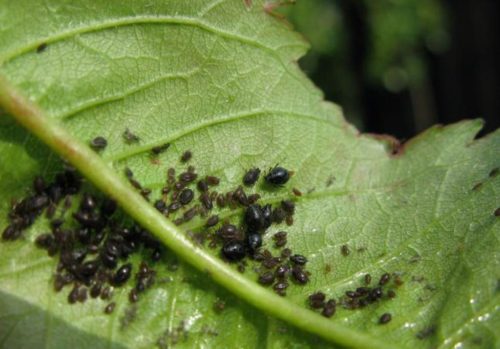
Observing all the rules for landing and care for cherries, as well as with regular and proper trimming of trees, you will receive an unusually rich harvest and delicious berries over the years. And the fragrant blooming cherry garden will delight you every spring, decorating with lush flowering garden plot.

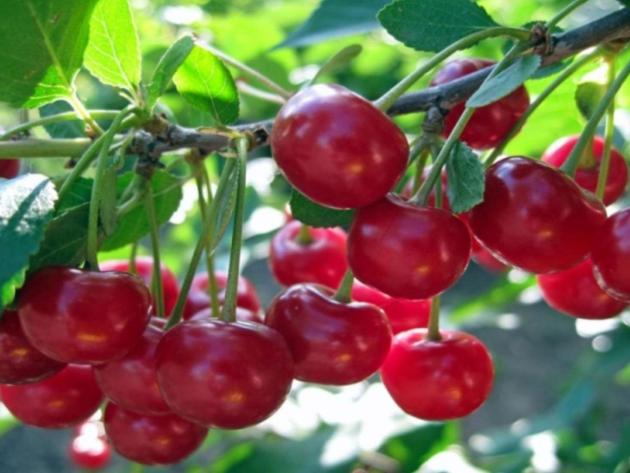







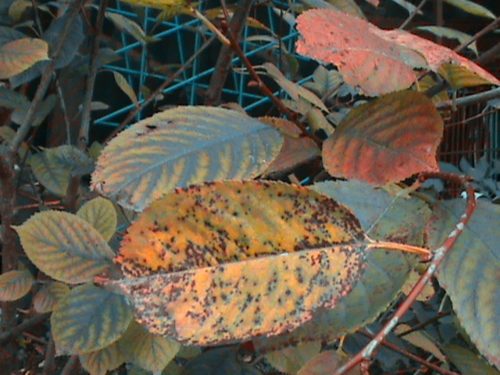
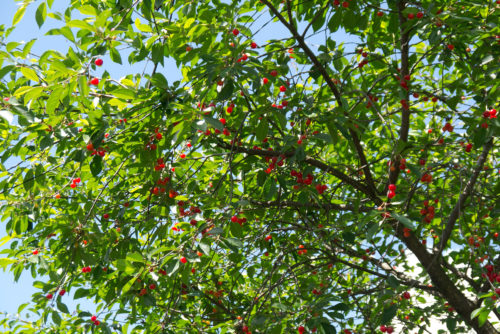
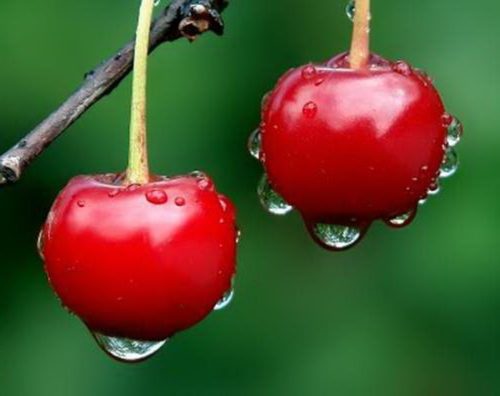
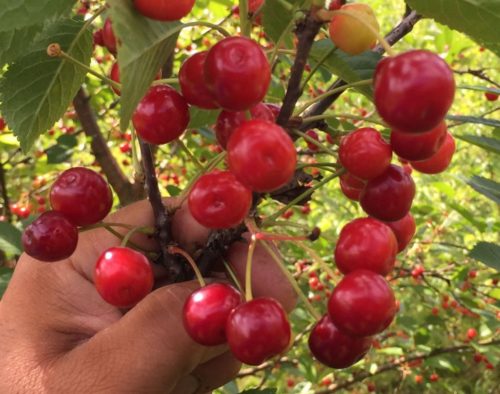
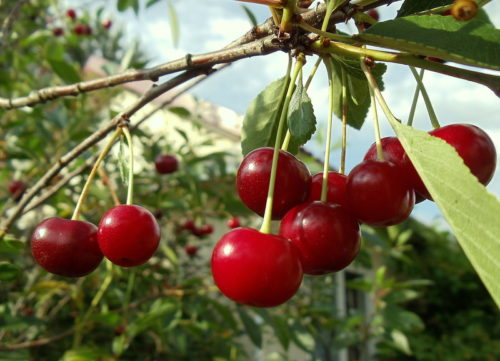
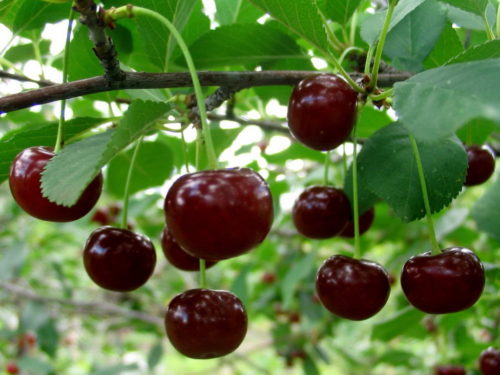
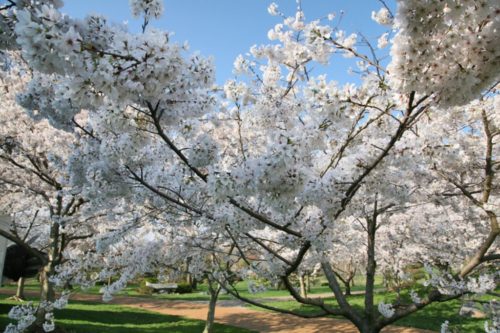
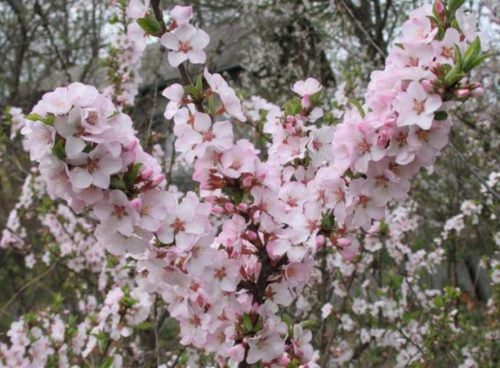












 Start a discussion ...
Start a discussion ...